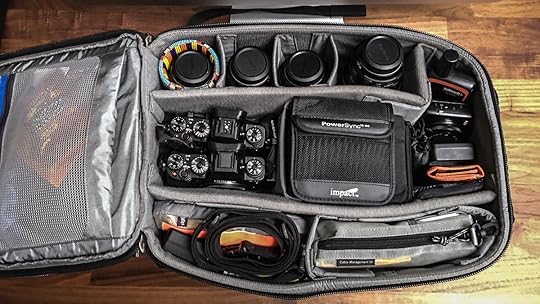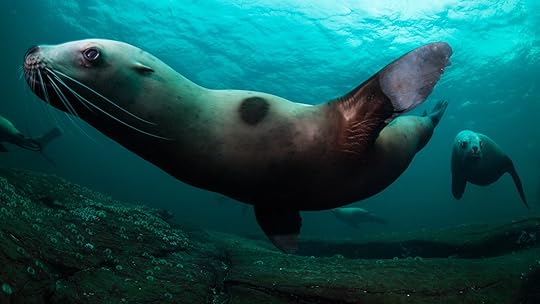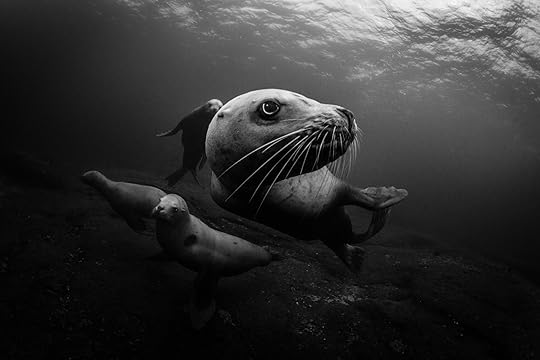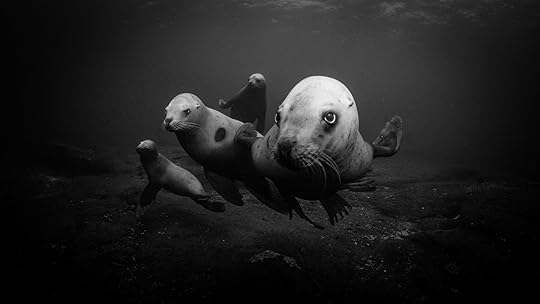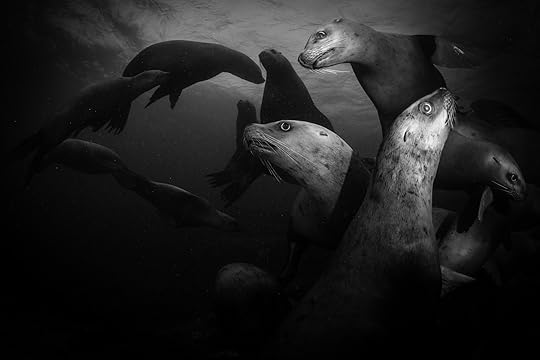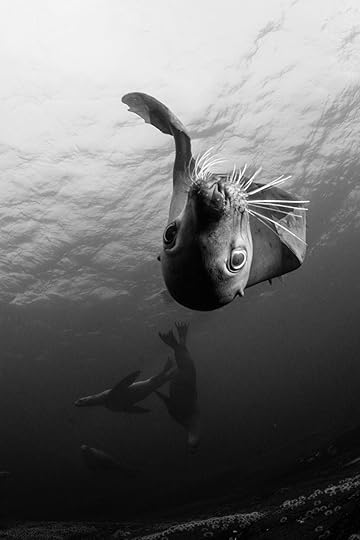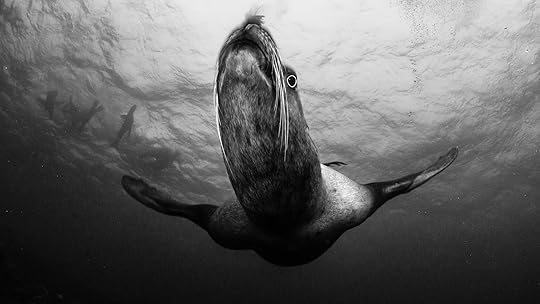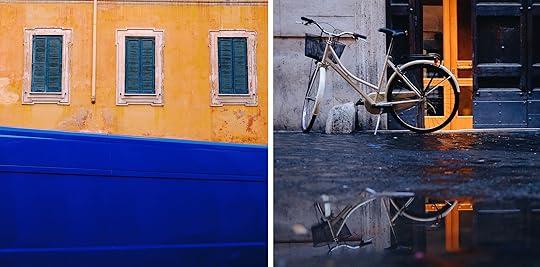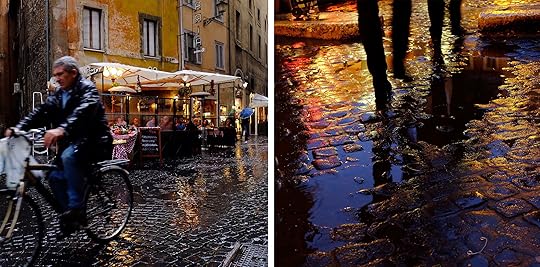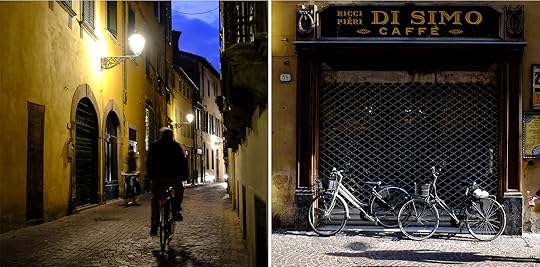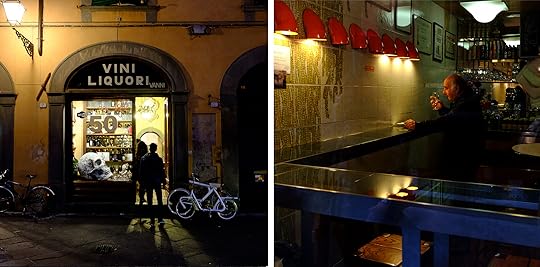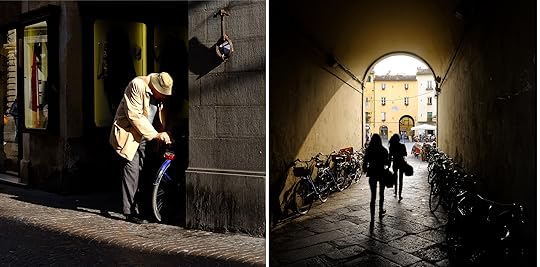David duChemin's Blog, page 12
January 1, 2016
After the Camera
I spent December unpacking from my 2-month wander around the UK and Italy, and the usual pile of things including working through 2 months of images I needed to edit and post-produce. Unlike many for whom this is a painful process, I find it goes pretty quickly and I look forward to it. In part that’s because I’ve been doing it a long time. And in part it’s because I’ve simplified the process and don’t make more of it than it needs to be for me. So I had time left over to work on my latest project. Today we’re releasing After The Camera, a 20-episode video series about editing and image development in the digital darkroom, specifically Adobe Lightroom. Here’s a 60-second teaser:
I sat down and recorded 20 sessions in my studio office, so you can sit beside me and look at my screen while I walk you through my vision-driven workflow, from import, to editing, to post-production and refining images for output. It’s a simplified approach to the digital darkroom and I made it specifically for people who get a little overwhelmed by the possibilities.
Beginning with identifying your vision or intent, then walking through some very specific, but simple, steps, this approach is my day-today workflow, focusing on aesthetics, and not bogged down by the overly-technical. If you need to brush up on your Lightroom chops, there’s lots in here – all the tips and tricks I use to speed things up. If you need to better understand ideas like visual mass, and how to better lead the eye around an image, that’s in there too. And once I’ve talked through all the ideas with you, I open a series of images and walk through them from beginning to end. And if you don’t already have them, I’m including my set of 36 Develop Presets for Lightroom.
After the Camera will be available, with the included presets, in 20 streaming and downloadable videos, for USD$40, but for the next week it’s yours for only $30, saving you 25%. If you haven’t already, take a look at the 60-second trailer near the top of this article, and then, if you want more, the full Episode 13 video is below. As always, thank you for your support. I’m in Lesotho, Africa right now but I’ll drop a line as soon as I can.
Share this Post, Tell the World!
December 27, 2015
Gear for 2+ Months
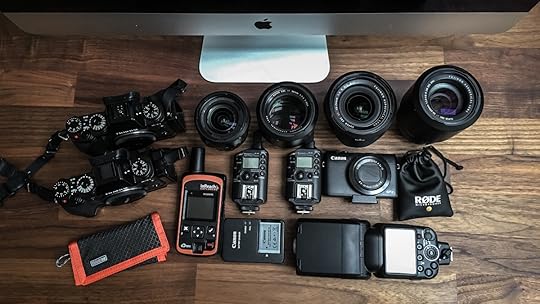
In a few days I jump onto my first flight of 2016 and head to Johannesburg. From there I drive to Lesotho and then on horseback into the mountains to photograph for a couple NGOs working among shepherd children. This will be the first leg of a trip that’ll take me to Namibia, Cape Town, Kenya’s Maasai Mara, Zanzibar, Rajasthan, and Istanbul before returning home just over 2 months later.
For the curious, here’s the gear I’m taking:
2 Fujifilm X-T1 bodies
4 Fujifilm lenses: 18-55mm, 56/1.2, 10-24mm, 55-200mm
Canon G7x, Rode Mic, and batteries (for video podcast)
Nikon SB 910 strobe and 2x Impact PowerSync triggers
12 Fujifilm batteries, 2 chargers (not shown)
12 x Lexar 64GB SD cards
deLorme Explorer GPS / Satellite text communicator
1 GTech 1TB weatherproof harddrive
All this plus meal bars, and a dry-bag for rain in my ThinkThank Photo Airport Essentials bag weighs just over 17lbs. When I think about how heavy my DSLR gear used to be for a trip like this, it’s astonishing that this represents 2 very capable cameras and lenses from 16-300mm (35mm/full-frame equivalent). If I weren’t going into the bush, or for so long, I could reduce this easily by another 4 lbs. (I love this bag, by the way. For mirrorless gear it’s fantastic and allows me a much thinner lighter bag than I’d need if I had the taller pro-sized gear. And it’s got a sleeve for a laptop and decent backpack straps)
I’ll also have a second carry-on, my much-loved Filson satchel (a 24-Hour Briefcase – you can see it in the featured image at the top of this post if you’re reading this on my blog, not the RSS feed), with my 13″ MacBook Air, charge cables, another harddrive, passports cash, sunglasses, headphones, and a novel (re-reading Shantaram)
In my duffle bags (2), aside from trekking gear, sleepling bag, tent, etc., will be the rest of my photo gear: a Gitzo Ocean Traveler tripod, my Mindshift Filter hive with filter system, and a handheld 24-inch hexagonal softbox for my strobe. When the Lesotho assignment is over I’ll send producer/assistant/manager/friend Corwin home with my larger duffle and he’ll take the strobe, softbox, backcountry gear, and one of the harddrives with him, and Cynthia will fly in, bringing my dive mask, Sony RX100II, and underwater housing for the week diving in Zanzibar. I’d love to be able to bring my Nikon D800 and the full dive kit but it’s just too much for such a long trip. That’ll wait until I’m home to dive again with the Stellar Sea Lions here in British Columbia and then head to Socorro in June to dive with giant mantas and hammerhead sharks.
The only other things we’ll bring are 2 of the Goal Zero Sherpa 100 kits to keep charging batteries for the 8 days or so that we’re in the mountains.
I’ll try to remember to do an episode of my YouTube show, Vision Is Better, and walk you through some of my gear choices, particularly where dealing with power issues is concerned but I won’t post it until I’m back from Lesotho. And I’ll try to do an episode about the flash stuff, too; many of you will have heard me say how much I loathe working with artificial light, so this will either be an interesting constraint in my creative process, or I’ll be bitching (again) about how much I loathe strobes, the first chance I have to do so. I impose a new constraint on myself with each trip and this one seemed to make some sense given the possible harsh natural lighting and the focus the Lesotho assignment will have on people.
Stay tuned in the coming days – we’ll be launching After the Camera, a 20-episode video series walking you through my Vision-Driven Workflow – the simplified approach to editing, organizing, and post-production that I use for my own photographs. (Here’s a quick, 60-second rapid-fire teaser video, but don’t get too excited when it says “Available now”. It’s not. January 04 at the latest, Jan 01 or 02 at the earliest.) I’m excited about this one and a little sad I’ll be on a plane when it launches, but I’m pushing my team to squeak it out a little earlier for regular readers. As usual it’ll be on sale when it launches. After the Camera will be $30 (25% off the soon-to-be regular price of $40).
I’m home for a few more days, so if you want to talk gear, the comments are open. I don’t invite you to geek-out too often, so now’s your chance.
December 25, 2015
Let It Be.
Let it be a year free not from fearful things but a year of courage and the strength lean to into it and breathe deep when it seems to be suffocating. May we all be people that give courage to others; we need courage and grace now more than ever, lest fear win in our hearts and rob us of who we are and all we can be.
Let it be a year of intentional living and an end to wishing for things that could be within our grasp if we just had the will and strength to risk it and reach our hands a little further. Let it be the year we learn to find joy in the grasping and the reaching for those better things, even when they remain just beyond reach.
Let it be a year of beauty in unexpected places.
Let it be a year of love extended and reciprocated. And when it’s not reciprocated, may we have hearts that aren’t so hungry that we can’t still extend that love.
Let it be a year of forgiveness and mercy and the joy that comes from loosing old chains.
Let it be a year of inspiration created and not merely waited for.
Let it be the year we open the wine we’ve been saving for a special occasion, and the wisdom to know that any day can be special when we open that wine – metaphorically or otherwise.
Let it be a year when the loss of daily life brings us to honest tears but never to our knees; may you never give up.
Let it be a year of beautiful light and finding joy and mystery in the shadows.
Let it be a year of renewed curiosity. There is so much to see and experience in this life. May your days be full to busting.
Let it be a year with more friends and less Facebook. More loving and less liking. More long walks and mad love-making. More art and less artifice.
Let it be a year of compassion. To others. To this planet. To future generations. To the creatures with whom we share this blue world. And to do this, may we learn to extend that compassion to ourselves.
And let it be a year of joy in seeing the world and the moments around us, knowing that the brevity of life makes those moments all the more precious. We have this brief, astonishing, beautiful, life, let it be full and honest. May you look back with gratitude and forward with hope, and live right here, in this moment, with both.
Happy New Year, my friends.
Share this Post, Share the Love.
December 11, 2015
Holiday Gift Guide
You knew I wasn’t going to be the voice telling you to go buy more stuff for the photographers in your life, right? Right about now every blog out there is starting to release their Holiday Gift Guides and you should probably go there if you are looking for something cool to buy yourself, oops, I mean to buy someone else. This is not that guide.
I have another idea, one I posted on FaceBook the other day and want to elaborate on here.
The photographer in your life doesn’t want another Hoodman Loupe or Lens Cleaning Kit. They can get that themselves. They might want the new Leica, but they don’t need it. Want to really change their lives and give them something they can’t get themselves?
Give them the gift of your patronage. Buy their prints. Commission a portrait. Book a session with them. Buy their books. And I don’t mean people like me. I mean the highschool kid who lives next door. Or your brother. The guy in your camera club. Find a photographer who makes work you love and spend the money on their art. Then find a place to put it in your home. Tell them you love their work, and show up for them by taking it home. Because everyone tells them they love their work, but fewer people put their money where their mouths are.
If you’re already doing that, then give them one of yours. Print it. Sign it. Frame it. And put a bow on it.
Donate a print to the local hospice in the name of that friend. Or buy one of their prints and donate that to the hospice in their name.
Buy them a book of photographs by one of the photographers you most love. Or buy two copies of a book of photographs that neither of you has seen- one for you, one for them – and talk about the images over the coming months.
Email one of your friend’s photographic heroes, ask them to look at your friend’s work and send your friend a letter or email giving them honest encouragement and critique. This will be harder, but it’ll blow your friend’s mind.
Pay for a weekend away together – camping and shooting landscapes, in NYC walking the streets with cameras. Go to some art galleries and talk about art. Go to a bookstore and look at photography books (not the how-tos, but the books of actual photographs). Shoot together. Teach each other a thing or two in Lightroom. Then plan the next adventure.
Be creative. What most photographers lack is the confidence to believe their work matters. They lack time with their friends. They can buy the gadgets themselves. They probably already did. But the stuff I’m talking about – I guarantee you no one else is getting it for them, they can’t get it themselves, and it’ll touch them deeply.
This applies to everyone in your life. Show up for them. Give them your presence instead of your presents. Unless it’s a 6-year old, then you better show up with loot, man.
Share this Post, Tell the World.
December 8, 2015
Steller Sea Lions
In the Salish Sea, the wild green waters of the Strait of Georgia, between British Columbia’s west coast and Vancouver Island, there’s an island that takes a couple ferries to get to. The water is full of life upon life and is the winter home to Steller Sea Lions who will winter there and feed on the spring herring run. I have tried a couple times now to dive with these sea lions, both here and closer to my home in Victoria, only to be defeated by their absence. It almost happened again this time.
Good friends and I piled our dive gear into our Jeeps and drove north, heading up-island about 3 hours, through torrential down-pours and gusting winds on Friday night. The forecast already told us the chance of diving on Saturday was slim. The optimists among us were sure it would pass. It didn’t. We spent Saturday with each other, drank some wine, told stories, planned future dive trips, and looked nervously out the windows once in a while at the storm gaining speed and fury.
On Sunday morning there was a bit of a break, but still rough out. A couple of us dove the house reef not far from shore, and spent a few minutes with some passing sea lions, curious to see what we were all about before moving on. Visibility was excellent, a surprise given how choppy the seas had been. We surfaced begging to try for another dive, and keeping an eye on the weather which was gaining speed again, we filled tanks and headed to Norris Rocks, the Sea Lion rookery, through driving rain and pounding waves.
I tell you all that because it was a hell of an adventure, which is what you say when you get through the other side and it all goes well. At the time I was a little nervous. 2 of the more experienced divers had stayed behind, not because of safety but because they were pretty sure we wouldn’t see a thing even if we got out there. And they missed out on what was, for me, the dive of my life. We jumped into the water and before we were kneeling on the bottom at 35 feet, the sea lions were already upon us, swooping and diving with such speed and grace it was hard at times to keep track of them. One moment there, the next gone, and soon back again. Curious, they nibbled everything they could – hoses, fins, housings, arms, heads.
I’m not going to lie, it’s both a thrill and a concern when a sea lion has your skull entirely in its jaws. They are so gentle, but it felt like a good squeeze would be more interesting for them than for us. And yet you hardly noticed because others would be right there in front of you, looking into your eyes, amused by their reflections in the dome of our camera housings.
It was the shortest hour of my life and I surfaced from that calm and delight to an angry surface, bouncing our way home (after losing my lunch a few times) unable to contain the joy. This. This is what I was writing about the other day when I said we need to find the magic. You need to put yourself in front of things that inspire the wonder, that make your heart and your mind spark with excitement; if you want to make more interesting photographs, put yourself in front of more interesting things. Forget the stuff that doesn’t thrill you, intrigue you, light you on fire in some way. Life’s too short. And at the same time it’s too long to live it untouched by those things, whatever they are for you. Because those things that light you on fire will create the brightest light if you fan it to flame, and people – as John Wesley said – will come for miles to watch you burn.
As for the divers who stayed behind, I was almost one of them. We make assumptions about what we will see, what we will experience. And when you add the desire not to carry a bunch of gear, or get wet, or just the desire to stay in and read a book, and it’s easy to miss these things – small moments of “what if”, small chances at something great. You never know if you never go, say my Aussie friends. Take the chance. Peer around the corner. Break the surface. Don’t let these moments pass you by, because how we live our moments is how we live our lives. And there are probably fewer of them than we think.
“Light yourself on fire with passion and people will come from miles to watch you burn.” ~ John Wesley
Share this Post, Tell the World!
Stellar Sea Lions
In the Salish Sea, the wild green waters of the Strait of Georgia, between British Columbia’s west coast and Vancouver Island, there’s an island that takes a couple ferries to get to. The water is full of life upon life and is the winter home to Stellar Sea Lions who will winter there and feed on the spring herring run. I have tried a couple times now to dive with these sea lions, both here and closer to my home in Victoria, only to be defeated by their absence. It almost happened again this time.
Good friends and I piled our dive gear into our Jeeps and drove north, heading up-island about 3 hours, through torrential down-pours and gusting winds on Friday night. The forecast already told us the chance of diving on Saturday was slim. The optimists among us were sure it would pass. It didn’t. We spent Saturday with each other, drank some wine, told stories, planned future dive trips, and looked nervously out the windows once in a while at the storm gaining speed and fury.
On Sunday morning there was a bit of a break, but still rough out. A couple of us dove the house reef not far from shore, and spent a few minutes with some passing sea lions, curious to see what we were all about before moving on. Visibility was excellent, a surprise given how choppy the seas had been. We surfaced begging to try for another dive, and keeping an eye on the weather which was gaining speed again, we filled tanks and headed to Norris Rocks, the Sea Lion rookery, through driving rain and pounding waves.
I tell you all that because it was a hell of an adventure, which is what you say when you get through the other side and it all goes well. At the time I was a little nervous. 2 of the more experienced divers had stayed behind, not because of safety but because they were pretty sure we wouldn’t see a thing even if we got out there. And they missed out on what was, for me, the dive of my life. We jumped into the water and before we were kneeling on the bottom at 35 feet, the sea lions were already upon us, swooping and diving with such speed and grace it was hard at times to keep track of them. One moment there, the next gone, and soon back again. Curious, they nibbled everything they could – hoses, fins, housings, arms, heads.
I’m not going to lie, it’s both a thrill and a concern when a sea lion has your skull entirely in its jaws. They are so gentle, but it felt like a good squeeze would be more interesting for them than for us. And yet you hardly noticed because others would be right there in front of you, looking into your eyes, amused by their reflections in the dome of our camera housings.
It was the shortest hour of my life and I surfaced from that calm and delight to an angry surface, bouncing our way home (after losing my lunch a few times) unable to contain the joy. This. This is what I was writing about the other day when I said we need to find the magic. You need to put yourself in front of things that inspire the wonder, that make your heart and your mind spark with excitement; if you want to make more interesting photographs, put yourself in front of more interesting things. Forget the stuff that doesn’t thrill you, intrigue you, light you on fire in some way. Life’s too short. And at the same time it’s too long to live it untouched by those things, whatever they are for you. Because those things that light you on fire will create the brightest light if you fan it to flame, and people – as John Wesley said – will come for miles to watch you burn.
As for the divers who stayed behind, I was almost one of them. We make assumptions about what we will see, what we will experience. And when you add the desire not to carry a bunch of gear, or get wet, or just the desire to stay in and read a book, and it’s easy to miss these things – small moments of “what if”, small chances at something great. You never know if you never go, say my Aussie friends. Take the chance. Peer around the corner. Break the surface. Don’t let these moments pass you by, because how we live our moments is how we live our lives. And there are probably fewer of them than we think.
“Light yourself on fire with passion and people will come from miles to watch you burn.” ~ John Wesley
Share this Post, Tell the World!
December 2, 2015
Find The Magic
I had a moment in Italy last month as I walked down cobbled streets looking at reflections in the canals of Venice, raising my camera once in a while to my face, feeling like I was in that state of flow that most creatives feel in their souls like a drug when it comes over them. That moment was a realization that for years the way I saw things as a photographer had become slightly uncalibrated, like I’d been looking at things in a mirror but the mirror had moved slightly off-axis and the things I looked at where not the things I saw. And the things at which I pointed the camera were not always the things I was actually trying to photograph.
My realization was this: too often I’d go out looking for photographs, and it wasn’t working. Something was off. The problem was this: the photographs weren’t there yet. I was looking for something that didn’t exist yet. The best photographs are an intoxicating mix of “Oh my God look at that!” (even when “that” is just a spark of an idea) and all the reactions and experiences to “that” that go on in our imagination before finally coming out into the world in a tangle of creative decisions we make with lenses, exposure, focus, and the geometry of the frame. No wonder, looking for that thing out there in the world before it’s even been made, there have been days when this was harder than it had to be. We have to first have that moment of revelation before we can find a photograph within it.
No, looking for photographs isn’t the point. It never really was, though I spent many hours and days doing so. The point is finding the magic: finding that thing that lights you up inside, that lights a spark in your curiosity, or makes you react in some way. You can get a million photographs in a million other ways, but the photographs that have magic in them, those are the ones that connect with people, and pass on some of the wonder to them. The world doesn’t just need more photographs. It needs more magic.
Magic is not always comfortable. It’s not always shiny and happy. For some photographers that magic is found in the heartbreaking honesty of their work, and of their subjects. For some it’s an unflinching look at our common humanity. I see magic in the work of James Nachtwey, and no one would mistake his work for being cheerful. So don’t mistake me for pushing you to the making of saccharine images. We have too many of those already. I’m just suggesting that if you look for the spark, and let that spark light a fire, you’ll – in the end – find better photographs. Because they’ll mean something. They’ll come from a deeper place and so speak to the deeper places in others.
Forget the word magic if you have to. I’ve already mentioned that “Oh my God, look at that” reaction we have as we move through the world. Find more of That. Wait for more of That.
This approach has freed me to enjoy what I do more now than I have in years. It has removed from my shoulders the burden of “taking photographs,” and replaced it with the freedom to play. To explore. To seek experiences and connections. In a way, and I’m speaking in metaphor here, it’s placed the burden of the finding – and the looking and the hunting- squarely on the shoulders of Life itself. I still need to go out and do my work. I need to show up with open eyes and open heart. But I do not need to find photographs. I just need to be open to the spark, the magic. And free from some of the angst and pressure to perform, it’s amazing how much more I see.
Maybe it’s just words. It could be that I’m just a slow learner, only now finding out what’s been self-evident for others all along. But this realization that my job – my privilege – is to just find (and share) the magic, has been illuminating. My job isn’t, in the strictest sense, to make photographs. It’s to go out and experience life as deeply as I can. Because that’s where the magic is. And if, on those days that the magic is there but I can’t find a way to put it into a photograph, I’ll at least have been there, breathing a little more deeply, looking with wider eyes, and not walking through some astonishing city but never really seeing it because I’ve got my head down looking for something that I haven’t yet made from an experience I haven’t yet had. Find the magic. Because if it doesn’t show up at all, no amount of waving your camera around, and no amount of tricky post-processing, is going to bring it back.
Share the Love, Tell the World.
November 28, 2015
An Iconic Photograph, or a Photographed Icon?
Talk to any traveling photographer for long and the words “iconic photograph” will come tumbling out of their mouth as surely as a bus-load of tourists with selfie-sticks will spill out the moment you arrive at a destination and set up a tripod, thrilled to be there alone. As goals go, it sure beats wanting nothing more from our images than just perfect focus and exposure. In fact I can’t think of a more lofty goal than wanting to create an iconic image.
But I’m learning two things about creating iconic photographs. The first is this: it probably never happens when you’re trying. The problem with lofty goals is that sometimes – no: often – they aren’t hit by aiming at them. Hope that your photographs become iconic in some way, sure. But as goals go, it’s probably better to aim at creating a photograph that embodies the things for which iconic images become known: a rare glimpse of humanity, or a moment in time that represents something larger. After all, that’s what an icon is – something symbolic, something tangible and understandable that represents something larger, less tangible. The point is not really that your photograph is or isn’t iconic – others will decide that for you. The point is whether it connects on a level that’s more universal than just your family or the people in your camera club. The point is: does it mean something, or tell a larger story. And that has way more to do with who you are, how you see, and where you look for symbols and meaning, than it does with the camera you use, or the settings. This has way more to do with the storyteller than the words he chooses.
“If I can find something that resonates more strongly with the human heart or imagination, I have a shot at the kind of connection in a photograph that one day others might call iconic. It’s the connection that matters. It’s the meaning.”
The second thing I know is that making an iconic photograph is not the same as photographing icons. The Eiffel Tower is a symbol, an icon; a photograph of the Eiffel Tower is much less likely to be. And that’s where travel photographers fall down so often. We arrive in a place like Paris, and rush to the big sites: Notre Dame, L’Arc de Triomphe, Tour Eiffel. Sacre Coeur. And why not? Those places have become what they are because they astonish, they mean something historically. But it is rare that those places become the subject of our best work. They might be in our best work, but they won’t be the subject. The subject has to be deeper.
Your best work when you travel, over the span of years and locations, will likely not be the ones that come from a standard, templated experience: go to the Taj Mahal, stand in the right place, take the same photograph as millions have already made. No, your best work will come from exploring the other side, the empty quarters, the places off the beaten path. Or, if they happen in those well-known places, they’ll happen when you’ve been there long enough, know the place well enough to see something different, to find a moment that means something more than “I went to the Taj Mahal and it looks like this.” We’ve seen the Taj Mahal, now show us something we haven’t seen. It’s got to connect if you want to cut through the veil of the mundane that so many of these photographs have become now that we’re swimming in a sea of them.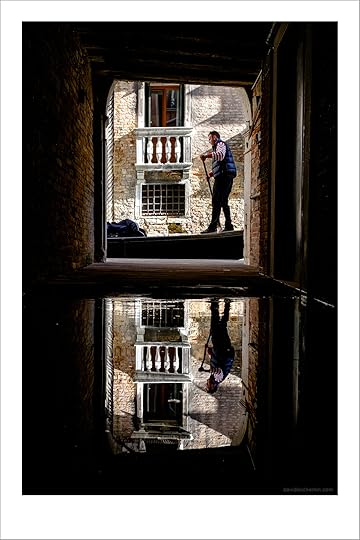
That’s the real challenge of travel photography. It’s not making another sharp photograph of the Taj Mahal. It’s being there, being really present, and having eyes open to all of it, not just the big stuff on the postcards, and finding something there that means something and pulls at us in new ways. In my own work from Venice I’ve chosen over the last 6 years to photograph gondolas, easily one of the more iconic subjects you could choose. But if my images of gondolas ever mean something more to people (big if) it won’t be because of the gondolas. It’ll be something more. Some unique moment, some unexpected juxtaposition, some human story that connects those gondolas to a larger story. That’s where icons and symbols play best – in a larger story. The larger the better, but by large I don’t mean “epic.” I mean more universal.
There is no shortage of gondola photographs, and many of them far better than what I could create. But if I can find something that resonates more strongly with the human heart or imagination, I have a shot at the kind of connection in a photograph that one day others might call iconic. It’s the connection that matters. It’s the meaning.
Share this Post, Tell the World.
November 23, 2015
Postcards from Rome
Ciao from Roma! We spent this evening walking through Rome in the rain, the shadows and reflections of this ancient city bounced back at us on the glistening cobbles, as we passed boutiques and wine bars, music and light pouring out of the wine bars. This morning we walked over to Vatican City, and yesterday it was the Colosseum, Pantheon, Forum, and fountains and piazzas too many to recall. What a great city, and a high note to end on. We’ve been on the road for almost 2 months and only now feeling like we’ve found our groove so completely that the idea of home has been reduced to just the two of us, and we take that wherever we go. A couple could get used to this kind of nomadism.
I could also get used to the kind of workshop I did in Venice a couple weeks ago, which is why I went to Florence and came to Rome, to see if these cities are places in which I might like to teach. They are. So much. Details aren’t remotely ready, and I’m not announcing anything just yet, but I am planning 3 one-week intensive workshops next fall in Italy, one in each city: Venice, Florence, and Rome. The workshops will be designed, as my Venice workshop was, to thrust you into a new city and out of your comfort zone. They’ll be created to get you to work on an intentional body of work in a very small group of four peers (that is, there will be only 4 people in the workshop, this isn’t one of those awkard group-activities), and they’ll be by application only. If you’re interested in being the first on the mailing list, leave a comment on this blog post and be sure you leave your email address in the field for that. When the new workshop dates and format are announced, we’ll drop you a line.
One more thing. If you’ve seen this on my Facebook page, forgive the duplication. On November 27 and 28 Craft & Vision is going to have one of those Black Friday sales. Everything will be 50% off. All ebooks, all videos, presets, and even my print book, SEVEN, thought there are only a few of those left. I’m of mixed emotions about being part of the culture of “buy now, buy now!” but we’ll be contributing 20% of our profits to the Red Cross in support of their appeal on behalf of Syrian refugees. There’s so much talk lately about this crisis, so much of it heartbreaking and fearful and I don’t want to be a part of that. We stand on the side of the widows and orphans and the homeless and will not allow politics, religion, or fear-mongering to stand in the way of compassion, and this sale is a chance for us, as a company, to do something more than talk about that. Thanks in advance for your support.
See you when I get back to Canada.
November 15, 2015
Postcards from Lucca
I’m sending these postcards with a heavy heart from Lucca, a night after the new attacks on Paris, hoping someone out there needs a reminder that there is still good in the world, that beauty remains as imperfect but undiminished as always. That our ways of expressing grief and compassion and empathy for others may, like beauty, not be perfect, but are human. I’m hoping that after your souls and minds have been sullied by the vitriol on social media, you’ll stumble across these images, or hear the sound of your child laughing, and remember the good things. I’m hoping you’ll remember to drink red wine, to dance, to love deeply, and make love with abandon, and that when you get short of breath and the walls of fear feel like they’re closing in on you, you’ll remember that we – despite it all – still live in the safest times this race has ever experienced. Our lives are longer, and better – even in the poorest, darkest back corners. Fewer children die from preventable causes. Fewer young men die in wars. And that means more children grow to follow their dreams, more girls will marry their sweethearts and not see them go to war.
There has always been pain, and suffering. There has always been evil and darkness. It hurts no less. But the light can be impossibly bright and blindingly beautiful when we turn towards it. I hope we’ll collectively turn to the light, to love, and away from the shadows where vengeance takes root and we start looking among the innocent for someone to blame. We are better, and bigger, than that.
I wish you all light and love and beauty, and peace. My thoughts, and the thoughts of my team at Craft & Vision, are with Paris and all those who’ve suffered violence recently, whether the news has reported them or not. I beg you to be careful of the natural tendency to divide the world into Us vs. Them, and to be aware when the red mist fogs your eyes and the anger rises, and to find a place for those feelings that doesn’t spread the hurt. Peace and courage, friends.


